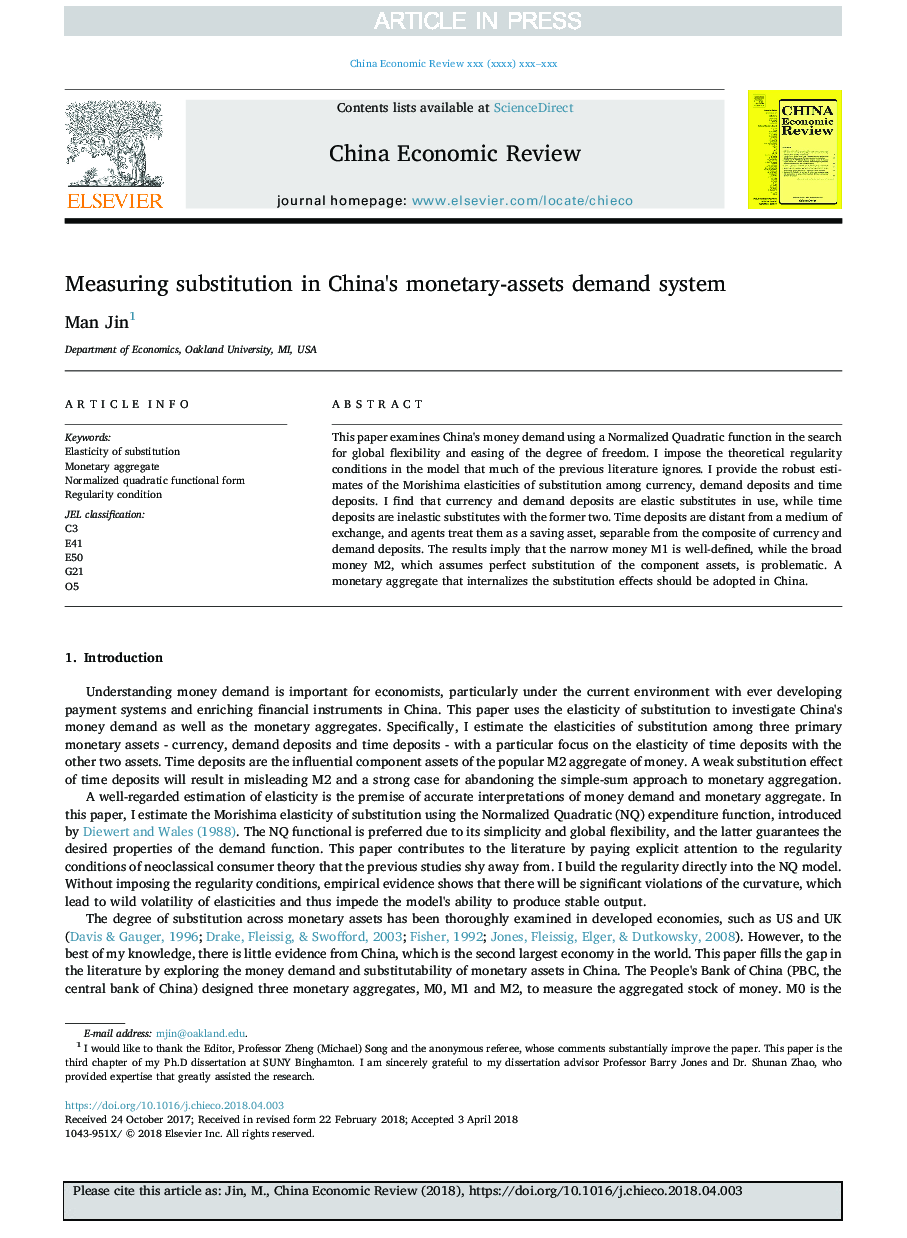| Article ID | Journal | Published Year | Pages | File Type |
|---|---|---|---|---|
| 7342269 | China Economic Review | 2018 | 16 Pages |
Abstract
This paper examines China's money demand using a Normalized Quadratic function in the search for global flexibility and easing of the degree of freedom. I impose the theoretical regularity conditions in the model that much of the previous literature ignores. I provide the robust estimates of the Morishima elasticities of substitution among currency, demand deposits and time deposits. I find that currency and demand deposits are elastic substitutes in use, while time deposits are inelastic substitutes with the former two. Time deposits are distant from a medium of exchange, and agents treat them as a saving asset, separable from the composite of currency and demand deposits. The results imply that the narrow money M1 is well-defined, while the broad money M2, which assumes perfect substitution of the component assets, is problematic. A monetary aggregate that internalizes the substitution effects should be adopted in China.
Related Topics
Social Sciences and Humanities
Economics, Econometrics and Finance
Economics and Econometrics
Authors
Man Jin,
